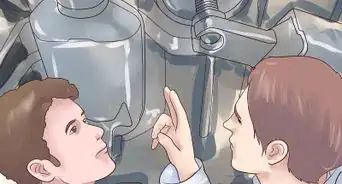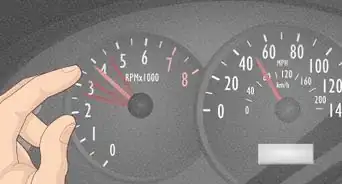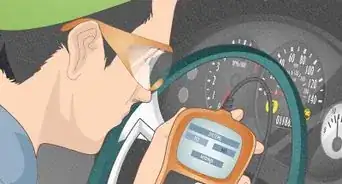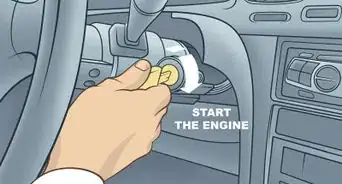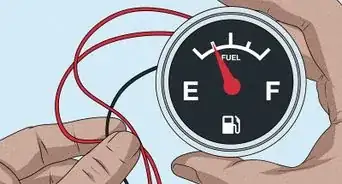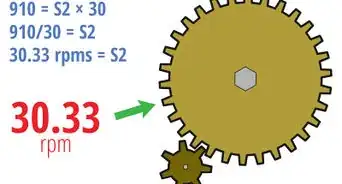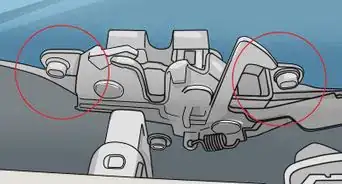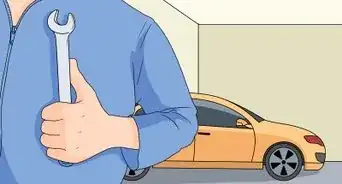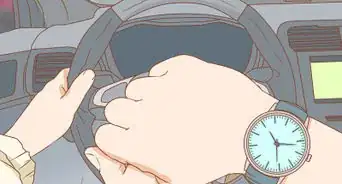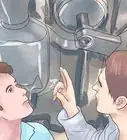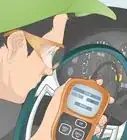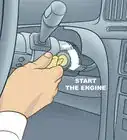wikiHow is a “wiki,” similar to Wikipedia, which means that many of our articles are co-written by multiple authors. To create this article, 18 people, some anonymous, worked to edit and improve it over time.
There are 9 references cited in this article, which can be found at the bottom of the page.
This article has been viewed 691,868 times.
Learn more...
There may be lots of reasons a car stalls at intersections, including low automatic transmission fluid levels, moisture in your gas, broken sensors, or issues with the EGR valve.
Steps
Clogged Catalytic Converter
-
1Look for stalling, no power when accelerating. The check engine light will likely be on.[3]
-
2Look under the car at night after the vehicle has been running for a while. If the catalytic converter is glowing, it's probably clogged. You will have to replace the converter if you find this to be the problem.[4]
Broken O2 Sensors
-
1Look for initial idle OK after a cold engine start-up, but a warm engine idle will surge and stall.
-
2Take your car in to get a reading.[5] After a few thousand miles of this, most cars will turn on the "check engine" light. You can take it to any AutoZone, Advance auto parts, Napa, or O'Reilly's (but some places may only check cars made after 1996, so call and check first) and they will read the codes for free. There can be any number of reasons for the "check engine" light to come on, so it is good to check. Codes complaining of unexpected lean mixture is a good indication of O2 sensor failure. O2 sensors will typically last 60–75K miles. The good news is that you can buy an O2 sensor online for around $50 and they are generally pretty easy to replace.[6] Another possible reason is that the engine is idling too low (the idle is adjustable) or the control module is going out, which is relatively inexpensive and easy to access and fix.
Clogged/Stuck EGR Valve
-
1Look for the Engine Code Error (EGE) P1406.If the EGR valve is stuck open, the car will run sluggish at lower RPMs. If the valve is stuck closed, the car won't run well at higher RPMs (on the highway).
-
2
Community Q&A
-
QuestionMy car started for a minute or two, then shut off. Now it won't start at all, but it sounds like it is trying to start. What might the problem be?
 Community AnswerIt's probably something with the fuel transfer system pump filter or maybe the spark plugs.
Community AnswerIt's probably something with the fuel transfer system pump filter or maybe the spark plugs. -
QuestionWhere is the screw to turn the idle up?
 Community AnswerOn the side of the EGR valve/throttle body, there's a cable that connects to a screw where you can adjust the idle.
Community AnswerOn the side of the EGR valve/throttle body, there's a cable that connects to a screw where you can adjust the idle. -
QuestionMy 2000 Nissan Sentra doesn't want to idle -- when it does, it stalls when giving it gas.
 Community AnswerClean your throttle body and intake manifold. Most likely the AFRs (air to fuel ratio) may be off, causing it to run too rich or too lean. Buy a can of throttle body cleaner and spray it in and around generously, while the vehicle is running. If that doesn't work, try running some seafoam through a vacuum hose while vehicle is running and also pour some in the gas tank. The fuel injectors could be clogged or need to be cleaned.
Community AnswerClean your throttle body and intake manifold. Most likely the AFRs (air to fuel ratio) may be off, causing it to run too rich or too lean. Buy a can of throttle body cleaner and spray it in and around generously, while the vehicle is running. If that doesn't work, try running some seafoam through a vacuum hose while vehicle is running and also pour some in the gas tank. The fuel injectors could be clogged or need to be cleaned.
Warnings
- Use the proper type for your vehicle. Do not overfill.⧼thumbs_response⧽
- Inspect the EGR valve while outdoors, or in a well-ventilated area, to reduce exposure to fumes from the carburetor cleaner or exhaust.⧼thumbs_response⧽
- Often, you will have to reach into cramped, hot spaces to check your fluid. Check your manual for the proper location. Take care not to be burned by engine parts. Wear long sleeve shirts or gloves as appropriate. Also, when adding fluid, it is a good idea to use a funnel with an appropriate length of neck.⧼thumbs_response⧽
References
- ↑ https://www.dummies.com/home-garden/car-repair/how-to-check-automatic-transmission-fluid/
- ↑ https://www.meineke.com/blog/how-to-check-transmission-fluid/
- ↑ https://www.youtube.com/watch?v=q5VaQ0wLOLw
- ↑ https://www.2carpros.com/articles/catalytic-converter-replacement
- ↑ https://www.youtube.com/watch?v=1ZBjHy76Pwc
- ↑ https://www.2carpros.com/articles/how-to-replace-an-oxygen-sensor
- ↑ https://www.familyhandyman.com/automotive/how-egr-valve-cleaning-can-stop-stalling-and-idling-problems/
- ↑ https://www.youtube.com/watch?v=Vr1BGRjllUQ&vl=en
- ↑ https://www.youtube.com/watch?v=ZedF7QsnYag
About This Article
To determine why your car stalls at intersections, you’ll want to test things like the transmission fluid level and the catalytic converter. To check the transmission fluid, park on level ground. Check your owner's manual to see where your transmission fluid is located. Unscrew the cap to the fluid and check the dipstick to see if your transmission fluid is low. If you have a clogged catalytic converter, your car will not only stall but will also have little to no power when accelerating. Look under your car at night after it's been running for a while. If the converter is glowing, it’s likely clogged. You might also have a clogged or stuck EGR valve. When your EGR valve is stuck open, the car will run sluggishly at lower RPMs. If it’s stuck closed, the car won’t run well at higher RPMs, like on the highway. To learn how to figure out if you have a broken O2 sensor, keep reading!







